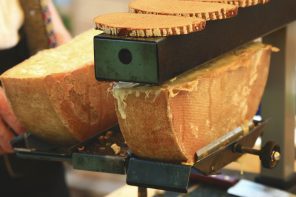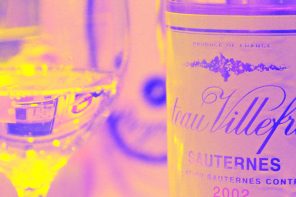Premature oxidation, shortened to pre-mox, is every Burgundy lover’s bane. Burgundy, as one of the world’s top wines, is meant to age for decades. This goes for both reds and whites. But starting with several vintages produced back in the mid-1990s, things took a sinister turn for many of the region’s wines.
Premature oxidation is exactly what it sounds like; oxygen comes into contact with wine compounds causing otherwise long-lived wines to oxidize. This results in a loss of fruit aromas, faded color, and steals any potential aging ability the wine once had. In short, they age more rapidly than they should, coming off as more dead than alive in the glass.
In whites, it shows up as muted or cooked fruits, sherry-like aromas, and a none too attractive brownish hue. A far cry from the pale golden elixirs Burgundy is known for. And it’s in white wines that this nuisance was first discovered. Although the term cropped up most recently and famously in relation to Burgundy, in fact, it’s a problem that isn’t unique to that region. Pre-mox has cropped up in the wines of other French wines and around the world. But the reason it has become such an issue is that as most of us know, Burgundy is pricey and no one wants to blast bucks on bad wine. ’96 was the infamous vintage where no matter what bottle was opened, it seemed as though pre-mox had struck. Other vintages soon followed.
The cause is a source of controversy. Are corks to blame? Is it over-zealous lees stirring? Not enough sulfur dioxide? The jury is still out. Some experts believed that poor corks were the cause, allowing air to slip in at an altogether too high rate and there’s a fair amount of evidence to suggest this is at least in part, at fault for pre-mox. Meanwhile, others were convinced that increased batonnage or lees stirring, which was particularly popular in the ’90s, was the culprit. But winemakers also used less sulfur dioxide (SO2) which has both antioxidant and antimicrobial properties. Maybe this opened the door for oxidation to occur. Not a bad theory considering pre-mox is often an issue for organic or natural wines which have mandated lower SO2 levels. A fascinating idea was put forward by renowned enologist Denis Dubourdieu that pre-mox in Burgundy has to do with the recent trend of letting grass grow amongst the vines. He suggests this causes water stress on the vines and when this occurs, the vines drop in the antioxidant glutathione. And antioxidants, of course, prevent oxidation. To this end, he states that wine from warmer vintages made by stressed vines could be at risk for pre-mox.
Reports from various wine media outlets suggest that perhaps, pre-mox may be a thing of the past; several notable wine writers have intimated that the process might be reversible given time. As Jasper Morris MW noted in 2015 that he’s tried a few wines from the ’96 vintage which after being allowed to open up in the glass for a period of time, were absolutely delicious and showed no signs of oxidation. I actually experienced something similar as a sommelier. A couple sent back a bottle of premier cru white Burgundy, saying the wine was off. Sure enough, it was oxidized. But waste not, want not. I set them up with a different bottle and at the end of the night, took the offending wine home to save it from being poured down the drain. I poured myself a glass and lo and behold, it was absolutely gorgeous. So maybe Morris is right; pre-mox isn’t a total death sentence.
Experts say that the problem could move on to red wines in a big way. Riper vintages should be handled with care to avoid the problems we’ve seen in whites. Bottom line? When in doubt air it out. Those questionable aromas and dumb flavors might just get carried away.









Really interesting and informative article, thank you!